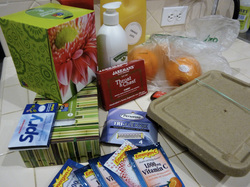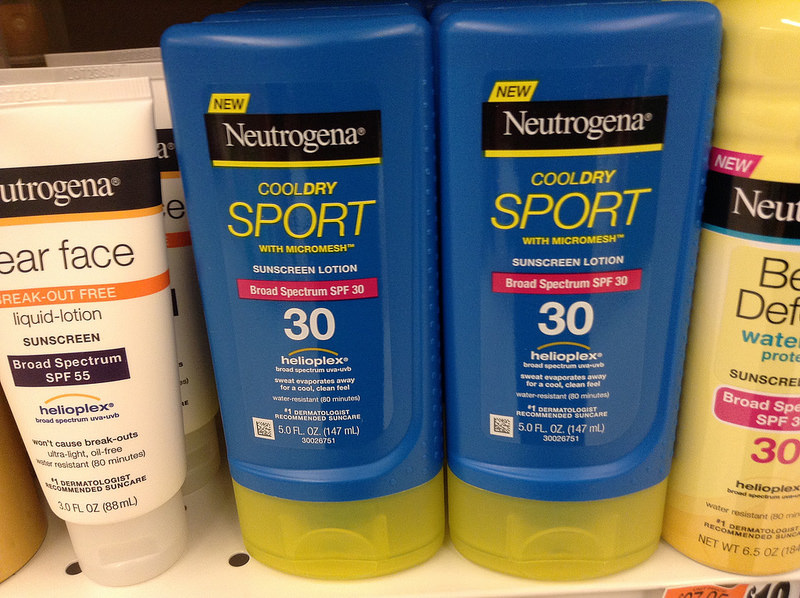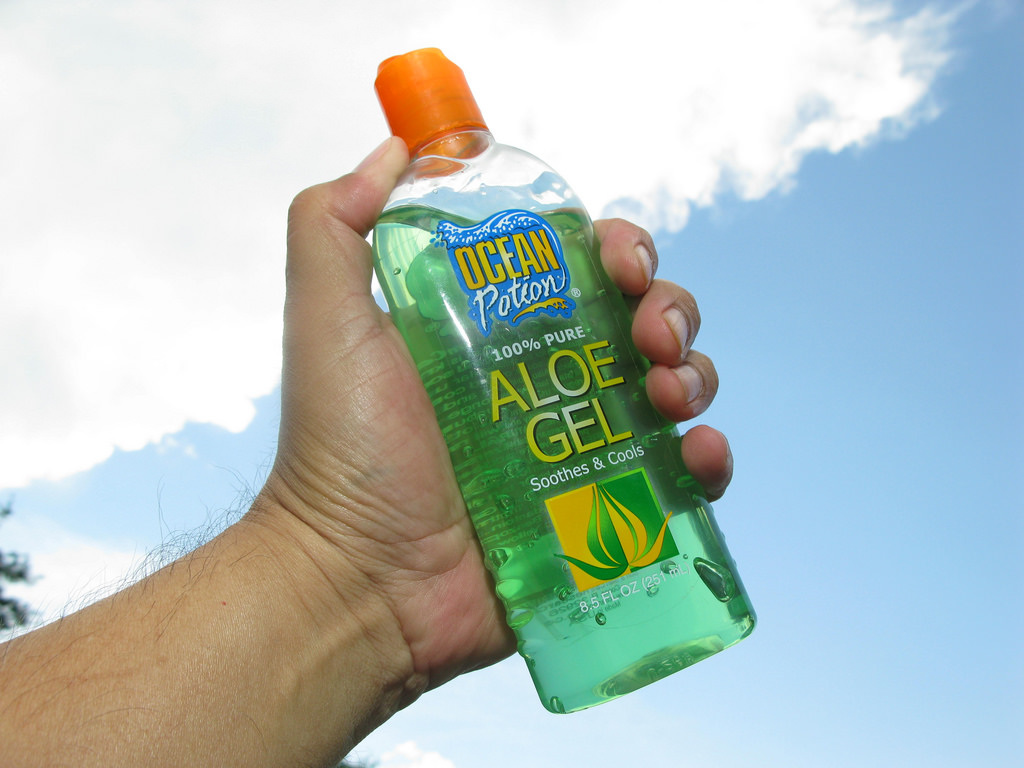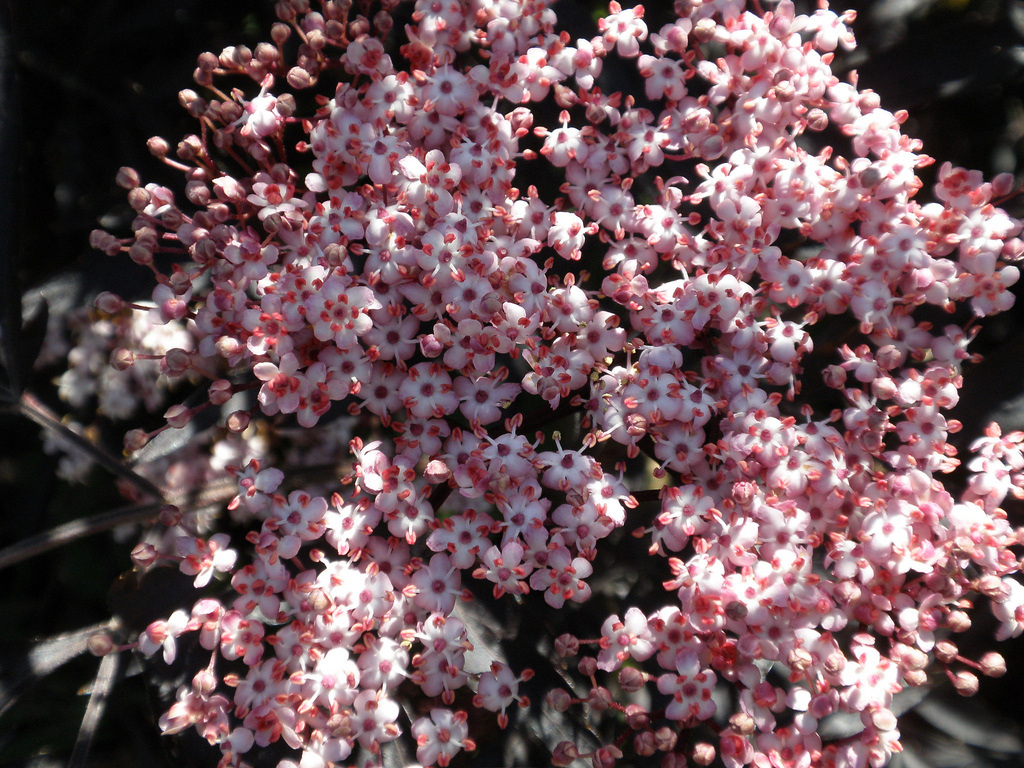What Does Vit D Do in the Body? There are a number of important jobs that Vit D does:
Measuring Vitamin D status Generally the next question I get from a lot of people is how do I know if I'm getting enough Vit D. Currently the best way to do this is to measure it in the blood by look at the blood or serum concentration of calcidiol (D2). Wait, didn't I say that the active form is calctriol (D3)? The reason is the 1/2 life of D3 is too short to make it a good indicator as well as it being regulated highly regulated by parathyroid hormone, calcium and phosphate. D3 levels also do not normally decrease significantly until Vit D deficiency is severe. How Much Vit D is Needed? If we understand how important Vit D is, the next thing my patients often ask is how much do I need? As we mentioned above, to know if you personally are getting enough, getting your levels checked is going to be the best option. However, there are general recommendations made by the government which are based on what is called the RDA or Required Daily Allowance. This depends on the average of what works best for a healthy population and maintaining basic requirements for health. In the case of Vit D that's enough to bone health and calcium metabolism, and then in addition the RDA is set based on minimal sun exposure as well. All of this combined, the current daily recommendation for adults and children over 4 years is 400 IU. If we're trying to raise our levels of Vit D, 400 IU is definitely not going to be enough.
Can I Get Enough from the Sun? Most people meet at least some of their Vit D requirements from the sun. However, what most people don't realize is that this depends. You need to be outside at the right time of day, and depending on where you live, time of year as well. We need to be exposed to UVB rays at wavelengths of 290-320 nanometers. Other factors that can affect this are: cloud cover, smog, melanin content of your skin (the darker your skin the more difficult it is to 'absorb' enough sun). Optimal Sun Exposure The factors previously mentioned and current research that's been done still makes it challenging to know exactly what the right amount of sun exposure is for each person. However, these guidelines are helpful to get some helpful exposure: - In general, approx 5-30 mins of sun exposure between 10am -3 pm twice a week to arms, face, neck. legs or back without sunscreen [NOTE: if you are monitoring risk for skin cancer, than keep in mind any recommendations from your healthcare provider] - Spring, Summer and Fall are the optimal times of year, particularly those who live in more northern latitudes
Take Home Message - Vit D is important for our overall health, and we're still figuring out the full extent of what this entails - Vit D is present in the diet, and through exposure to the sun we are able to synthesize Vit D - The drawback is it's tough to determine how much we're getting, so many of us will need to supplement with it at times - There are safe and unsafe levels of Vit D, and finding out what works best for us personally is likely going to require getting our levels checked periodically. Have questions about Vitamin D or making sure you're getting what you need to live your best life? Connect with me and we can get a personalized plan together that takes your individual needs into account. Note: Talk to your Naturopathic Doctor today about getting assessed and treated if needed, and as always talk to your health care provider before beginning any new medication or supplement. This information is not meant to replace the advice/guidance of a medical professional, nor should it be acted upon by individuals unsupervised by the appropriate healthcare provider.
0 Comments
Well that has to do with the composition and state of the small and large intestine. There’s anywhere from about 10-100 billion microbes present in the small and large intestine. This helps us understand why giving a probiotic or eating fermented foods makes a difference, because there’s enough probiotics present in the average capsule to replenish and encourage growth of good bacteria. Also, the small intestine is approximate 20 ft long, so it houses about 95% of the bacteria that live in our intestines. The large intestine on the other hand is only 4 ft long, but because things are moving much slower through the large intestine the bacteria layer in the mucosa can be up to 200 cells thick, compared to 1 cell thick in the small intestine. This allows this shorter stretch of organ to still accommodate 10-100 billion microbes. Research: As I mentioned before there are many studies that have been done and are currently being done on the effects of probiotics and the microbiome as a whole. If you did a simple google or pubmed search you would come up with 1000s of results. I can’t summarize all of them, but here are a few highlights: INFANTS AND PROBIOTICS Eczema, asthma and allergy have become much more of a problem over the past few decades than they ever were before. In the Swansea baby Allergy Prevention Trial they looked to see if intervening with probiotics at an early age could reduce the incidence of allergy, and atopic conditions by extension. The intervention was given to newborns for the first 6 months after birth. The outcome was a follows: Placebo group: Almost 10% of infants had atopic eczema at 6 months; Approximately 13% of infants had atopic eczema at 2 years. Probiotic group: Approximately 3% of infants had atopic eczema at 6 months; almost 6% of infants had atopic eczema at 2 years. The overall reduction of infants with allergy was 57% at 2 years. Remember, they only received treatment for the first 6 months. This demonstrates that the positive benefit of intervention goes beyond the intervention period. PROBIOTICS AND ANTIBIOTICS Most people are aware that we should take probiotics when we take an antibiotic. However, how much, when and for how long make a difference? One study, The Cambridge Clostridium difficile trial looked at the impact of probiotics to prevent/reduce C. difficile infection and associated diarrhea in patients receiving antibiotics. The outcome was as follows: Antibiotic/Placebo group: When tested at Day 28 they still had overgrowth or dysbiosis present Antibiotics followed by probiotic: They had a growth of bacteria up to Day 7, but then at Day 28 there was a significant decrease in bacterial overgrowth Antibiotics with Probiotics: There was no overgrowth of bacteria at Day 7 or 28 because the probiotics were present throughout antibiotic treatment This study demonstrates that by taking probiotics while receiving antibiotics you can decrease the chances of bacterial overgrowth occurring at all. However, it is still beneficial to intervene with probiotics later on as it will help to bring bacterial overgrowth under control.
Choices: Making sense of what’s available on the market As happens with most things in the market, as they get more popular there tends to be more people interested in developing a product for it. Over the last few years we’ve seen a huge increase in the number of probiotics available at the store. Knowing you have all these choices, how do you make the right choice for you? Well, there’s no short and easy answer to that. There are a number of factors you want to consider:
Knowing these things makes it much easier for you to select an appropriate probiotic. If you don’t know the answer to these questions or aren’t sure, then you may want to speak to a Naturopathic Doctor or other healthcare professional. When I go through this process with my patients, we figure out which probiotic (if any) might be best for them so it’s much easier to find what they need when they go to purchase a product from the health food store. Have questions about probiotics or how to improve your gut health overall? Please email me through the website ‘contact’ page or get in touch with me directly. Note: Talk to your Naturopathic Doctor today about getting assessed and treated if needed, and as always talk to your health care provider before beginning any new medication or supplement. This information is not meant to replace the advice/guidance of a medical professional, nor should it be acted upon by individuals unsupervised by the appropriate healthcare provider. References: Allen SJ et al 2014 Arch Dis Child Plummer et al 2005, Int J Antimicrob Agents 26
The Stats In the US: · Number of people in the U.S. who have either allergy or asthma symptoms: 1 in 5. · Percentage of the U.S. population that tests positive to one or more allergens: 55%. Internationally: The prevalence of asthma in different countries varies widely, but the disparity is narrowing due to rising prevalence in low and middle income countries and plateauing in high income countries.
Suffering from allergies can be a very irritating experience. If you or your child is suffering from allergies, it is best to take them to a Naturopathic Doctor who can perform a proper assessment and form a treatment plan that will address your/your child’s needs. Always speak to your health care provider before beginning any new medications or supplements. References: Allergy Statistics and Facts. WebMD. Reviewed by Johnson, K. (2012). http://www.webmd.com/allergies/allergy-statistics Asthma Statistics. American Academy of Allergy, Asthma & Immunology. http://www.aaaai.org/about-the-aaaai/newsroom/asthma-statistics.aspx Romm, A. 2003. Naturally Healthy Babies and Children: A Commonsense Guide to Herbal Remedies, Nutrition, and Health. Celestial Arts. Skowron, JM. 2009. Fundamentals of Naturopathic Pediatrics. CCNM Press. Print.
4. Cantharis 30 CH: This homeopathic remedy is great for burns of almost any type, including sunburns. You can use this in conjunction with Aloe gel or by itself. This would be a good choice if you’re concerned about your child trying to eat the aloe gel once applied. This remedy, like Aloe gel, also relieves pain and helps promote healing. 5. Apis 30 CH: This homeopathic remedy is excellent for bee stings in particular, but can be used to treat other stings and bug bites as well. Generally helps with reducing swelling, pain and heat. Especially helpful for swelling around the eyes when the eyes are becoming too swollen to open the lids. Caution: If someone in your family has an anaphylactic allergy and they require an epi-pen, do not carry Apis in place of the epi-pen. .This is by no means all the various natural remedies you could use for these situations, nor is it all the possible situations you could potentially encounter this summer. However, this is a good place to start to cover a lot of the common issues that could occur. If you’re not familiar or comfortable with the use of any of these remedies, always check with your Naturopathic Doctor or other similarly educated health care practitioner before use.
Note: Talk to your Naturopathic Doctor today about getting assessed and treated if needed, and as always talk to your health care provider before beginning any new medication or supplement. This information is not meant to replace the advice/guidance of a medical professional, nor should it be acted upon by individuals unsupervised by the appropriate healthcare provider.  We are seeing more people, especially children, with allergies these days. There are several thoughts about why this is happening, but overall it’s generally described as a hypersensitivity or oversensitivity of the body to an external stimuli. One such theory referred to as the 'hygiene hypothesis' proposes that many children do not get sufficient exposure to a wide variety of microbes, and as result of growing up in an extremely clean environment devoid of microbes the body does not learn how to modulate the immune response effectively. Thus creating a situation where later exposure to a substance causes a hyperactive response, or allergy. There seems to be some credibility for this theory since the significant increase in individuals suffering from allergies has been mainly in the western hemisphere, and we have not seen a corresponding increase in other parts of the globe. However, as more countries become more affluent and the number of people below the poverty line decreases we are seeing an associated rise in atopic conditions such allergy and asthma there as well. In the US: · Number of people in the U.S. who have either allergy or asthma symptoms: one in five. · Percentage of the U.S. population that tests positive to one or more allergens: 55%. Internationally: The prevalence of asthma in different countries varies widely, but the disparity is narrowing due to rising prevalence in low and middle income countries and plateauing in high income countries. Symptoms: · Postnasal drip · Sniffling · Dark circles under eyes (allergic shiners) · Puffiness beneath the eyes · Restlessness · Fatigue · Poor sleep · Headaches · Behavioural problems such as irritability, hyperactivity, poor concentration, whining, and pickiness about food Chronic allergies, especially those that cause allergic rhinitis, a persistent inflammation of the mucous membranes lining the nasal passages, can lead to constant head congestion, decreased hearing ability, reduced concentration, and difficulty remaining alert. Children with allergies may frequently feel tired and irritable. Hyperactive behavior may also emerge as a result of allergies due to nervous irritability from chronic inflammatory response or the need to keep moving to stimulate endogenous adrenaline supplies. While a tendency towards allergies may be inherited, the extent to which they manifest may have more to do with dietary, emotional and environmental factors than genetic factors.
Suffering from allergies can be a very irritating experience. If you or your child is suffering from allergies, it is best to take them to a Naturopathic Doctor who can perform a proper assessment and form a treatment plan that will address your/your child’s needs. Always speak to your health care provider before beginning any new medications or supplements. References: 1. Allergy Statistics and Facts. WebMD. Reviewed by Johnson, K. (2012). http://www.webmd.com/allergies/allergy-statistics 2. Asthma Statistics. American Academy of Allergy, Asthma & Immunology. http://www.aaaai.org/about-the-aaaai/newsroom/asthma-statistics.aspx 3. Romm, A. 2003. Naturally Healthy Babies and Children: A Commonsense Guide to Herbal Remedies, Nutrition, and Health. Celestial Arts. 4. Skowron, JM. 2009. Fundamentals of Naturopathic Pediatrics. CCNM Press. Print. |
Sarah Connors
I am a Naturopathic Doctor and Doula providing care in the Kitchener-Waterloo area. I have a passion for helping people with their health issues and improving the birth experience for Moms, and their babies. I also have a life long love affair with soccer, curling, and the alto saxophone. Archives
November 2020
Categories
All
|
Photos from Rural Royalty, manu flickr2010, Ryan Dickey, wocintechchat, huskyte77, paulswansen, Black Room Photography, harum.koh, Emery Co Photo, JeepersMedia, BrownGuacamole, wellnesswildflower, JeepersMedia, vastateparksstaff, colindunn, seelensturm, /\ \/\/ /\, 50mm.za, The Simpsons (Lee, Shirley, Luke and Rachel), AGRONAUTI, aivas14, Jonathan Rolande, winnifredxoxo, juhansonin, osseous, nan palmero, Theo Crazzolara, brianfagan, TP studio, wuestenigel, torbakhopper, anka.albrecht, Michael Stern, [-ChristiaN-], franchiseopportunitiesphotos, terren in Virginia, nateOne, barnimages.com, Dun.can, wuestenigel, @lattefarsan, amandabhslater, aphrodite-in-nyc, nutritionaldoublethink, Anne Worner, donnierayjones, mikecogh, angeloangelo, Rob.Bertholf, getaiwan, Lida Rose, matsuyuki, SurFeRGiRL30, marcoverch, amsfrank, mdaltry, nutrition education, Mike Prince, Edsel L, Neighborhood Nini, philipp.alexander.ernst, Mediocre2010, homethods, quinn.anya, Gamma Man, katerha, Eric Kilby, National Institutes of Health (NIH), rcmd_cfdfw_5_2, curtis palmer, Ray in Manila, frankieleon, Airsoftpal.com, byzantiumbooks, cchana, Brian Legate, Matt Lavin, BradHinton, monpetitchouphotography, wuestenigel, alexisjordanlewis, ByEPhotos, erix!, RLHyde, return the sun, quinn.anya, mliu92, frankieleon, loudista, Lyn Lomasi, upslon, derrickbrutel, cchana, National Institutes of Health (NIH), watts_photos, marcoverch, derrickbrutel, francesbean, weegeebored, Airsoftpal.com, Etwood, wu_135, shixart1985, Ingrid Taylar, VeritasFotografie, BioDivLibrary, emmanuelmorales1, Thanks for 1.5 Million Views!!, Will Merydith, reader of the pack, RoxyHobbs, Khanelle Prod' Medias, storyvillegirl, agromonitor, Arenamontanus, six:eleven, cote, SweetOnVeg, nenoirenediaz, lucianvenutian, markhillary, anotherlunch.com, inkknife_2000, archibald jude, rawtrigger, Imaginary Museum Projects: News Tableaus, Pavel P., Courtney Emery, Thien Gretchen, physiognomist, bark, Michigan Municipal League (MML), alberth2, Merelymel13, neofob, Care_SMC, Parker Knight, B*2

















 RSS Feed
RSS Feed
